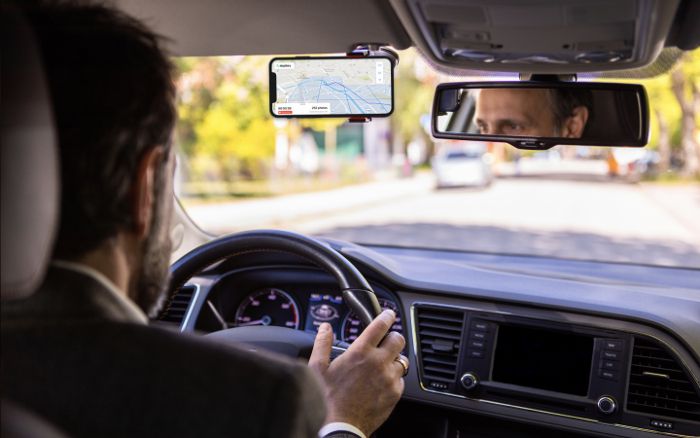The developers of a street-level imagery platform that uses computer vision and artificial intelligence (AI) to create detailed maps, Mapillary, has launched a new marketplace where organizations can request and buy up-to-date ‘crowdsourced’ street-level imagery and map data.
The new Mapillary Marketplace is the world’s first demand-driven ‘shop’ for street-level images and map data. Departments of transportation (DOTs), government agencies, automakers, mapping companies, and other organizations needing accurate map and street-level asset data are able to post mapping requests on the marketplace web platform for any location across the USA and Europe. Drivers of any sort, public or private, in the requested area can then view, accept, complete, and get paid through a mobile app for their uploaded smartphone or camera-collected images.

There are already three mapping projects live on the marketplace, with drivers being able to join and complete mapping tasks in Nashville (Tennessee) and Dallas (Texas) in the USA, as well as Gothenburg in Sweden. All the uploaded images are processed with computer vision that blurs sensitive information such as faces and license plates, and the technology automatically detects 43 different object classes before positioning them on the map. There are currently more than 50 billion street objects such as traffic signs, manholes, utility poles, and fire hydrants that have been detected from the 540 million images that have already been uploaded to Mapillary’s platform. The Swedish startup’s collaborative model is unique, as all the images on the platform have been uploaded by people and companies from more than 190 countries worldwide.
The marketplace is set to solve a major issue for mapmakers, mobility service providers, those developing cities, and progressing the automotive industry, as it will allow them to improve and accurately update maps on demand, without deploying their own fleets of mapping vehicles. The news taps into a rapidly growing industry, as the rise of new ‘disruptive’ mobility players, such as automated transport developers, puts increased pressure on access to up-to-date map data, with research showing that the global geospatial analytics market is set to grow by 350% between 2017 and 2027.

“The whole mapping scene is changing rapidly, and more players than ever need detailed and up-to-date maps. These days it’s not just humans that need maps, it’s autonomous vehicles, drones, delivery fleets, last-mile solutions, micro-mobility providers, and many more. Each of these needs to understand what streets look like on a detailed level and they need a scalable way to do that. That’s where our new marketplace comes in,” explained Jan Erik Solem, co-founder and CEO. “We’re the only organization to publish map data from street-level images in this way, available for anyone with clear usage rights and commercial terms. That’s why people and companies bring images to the Mapillary platform, because they need the data from the imagery and this is the only scalable way for them to access it. Recently we’ve had a lot of companies ask for map data in locations where there is no imagery, and that’s why we’ve built the marketplace.”





